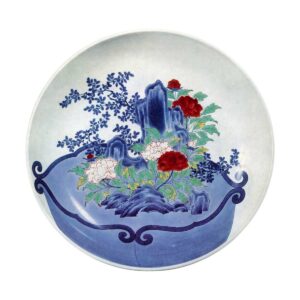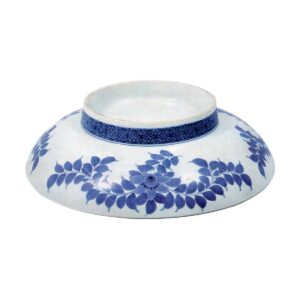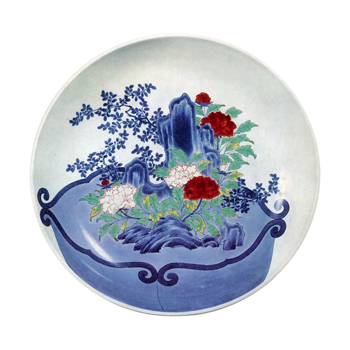

Height 8.2 cm, mouth diameter 30.9 cm, base diameter l5.8 cm
Kurita Museum of Art
This large dish, generally known as a shaku-plate, is a symbolic example of Nabeshima overglaze enamels completed at the Okawachi domain kilns. Among the existing shaku-plate in overglaze enamels, it is rare to find a dish with such an excellent shape as this one. Although it is a large dish, it rises up while showing the same taut curves as the excellent seven-sun dishes. It is a common practice for shaku plates to have the height of the plate slightly narrowed toward the tatami mat, but this is in proportion to the depth of the plate’s rise, and the height of the plate is also slightly higher than most.
The painting of peonies planted on a rock in the bonsai on this dish is also a common characteristic of Nabeshima ware. The composition of a peony planted in a large copper flower tray (flowerpot) with a rock set in a relaxed position seems to have been modeled on a Chinese-style powder-material painting, and the use of margins in the design is extraordinary. The design is unique not only in Nabeshima, but also in Japanese iroe.
The rose arabesque design in underglaze blue on three sides of the outer surface is a fluid depiction not found on other shaku plates, and is not formal, but rather a more refined version of the old Nabeshima style. The style of this piece is not clear as to the early period of the Okawachi domain kilns, from Enpo 3 to Genroku period, but it is thought to be a work from such a period, i.e., before the Genroku period.



